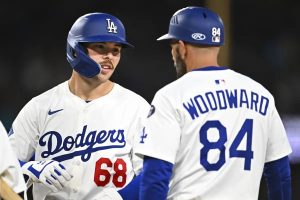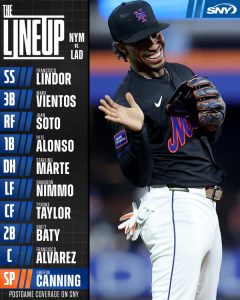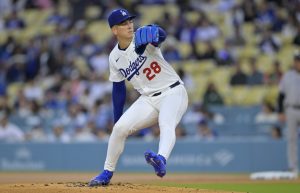
In the rich tapestry of basketball history, few teams have left a legacy as profound and as poignant as the Kentucky Colonels. As we mark the 50th anniversary of their triumphant 1974–75 ABA Championship season, it is not only an opportunity to celebrate an unforgettable team but also to reflect on the enduring spirit of a franchise that helped shape professional basketball in the United States.
The Kentucky Colonels were founded in 1967, part of the American Basketball Association’s (ABA) inaugural lineup. With their home base in Louisville, Kentucky—a state known for its deep basketball roots—the Colonels quickly cultivated a passionate fanbase. The ABA itself was a league defined by flair, innovation, and defiance of convention: it introduced the three-point line, a red-white-and-blue basketball, and a fast-paced, high-scoring style that would come to influence the NBA in significant ways.
While the league faced financial instability, it was rich in talent. The Colonels stood out early, assembling competitive rosters year after year. Their home games at Freedom Hall became known for their electric atmosphere, thanks to devoted fans and dynamic players who wore the Colonels’ blue and white with pride.
After years of knocking on the door, the 1974–75 season saw the Kentucky Colonels break through in spectacular fashion. Under the guidance of head coach Hubie Brown, the Colonels posted a 58–26 regular-season record. Their roster was loaded with talent, headlined by the dominant Artis Gilmore, a 7’2” center with a unique blend of power, finesse, and court intelligence.
Gilmore, who would go on to be inducted into the Naismith Memorial Basketball Hall of Fame, was the centerpiece of the Colonels’ strategy. Averaging over 23 points and 16 rebounds per game, his presence in the paint was both an offensive asset and a defensive deterrent.
Surrounding Gilmore was an elite supporting cast. Louie Dampier, one of the ABA’s most beloved and consistent guards, provided scoring punch and leadership. Maurice Lucas, a rising star and fierce competitor, added physicality and versatility to the frontcourt. Players like Wil Jones, Bird Averitt, and Ted McClain played crucial roles in maintaining the Colonels’ depth and balance.
In the playoffs, the Colonels demonstrated both resilience and dominance. After a grueling series against their rivals, the Memphis Sounds, Kentucky advanced to face the Indiana Pacers in the Eastern Division Finals. The Colonels triumphed in a hard-fought series, setting the stage for a championship showdown with the Denver Nuggets, who had posted the league’s best regular-season record.
In the ABA Finals, the Colonels dismantled the Nuggets in five games. Gilmore was named Playoffs MVP, but the entire roster contributed to the effort. The championship win on May 22, 1975, brought the state of Kentucky its first major professional basketball title, and cemented the Colonels’ place in history.
The Colonels’ 1975 championship was not only a moment of triumph but also a marker of how great the ABA had become by its final years. Sadly, the ABA-NBA merger in 1976 would lead to the disbandment of the Colonels, despite their success and popularity.
In a controversial move, the NBA chose to admit four ABA teams—San Antonio Spurs, Indiana Pacers, Denver Nuggets, and New York Nets—into the league. The Colonels were not among them. Team owner John Y. Brown Jr. accepted a $3 million buyout, and the franchise was dissolved. Brown would go on to purchase the Buffalo Braves, which eventually became part of the Los Angeles Clippers franchise.
Though the Colonels never had the chance to continue their legacy in the NBA, their impact lived on through their players. Gilmore joined the NBA’s Chicago Bulls and later the San Antonio Spurs, continuing to dominate as one of the game’s premier big men. Maurice Lucas became an All-Star and a champion with the Portland Trail Blazers. Louie Dampier was one of the few ABA lifers who transitioned to the NBA, ending his career with the San Antonio Spurs.
Half a century after their crowning achievement, the Kentucky Colonels’ championship still resonates. For many, it represents a golden era of basketball—a time when the game was evolving, and the ABA served as a crucible of creativity and talent. The Colonels exemplified what made the league special: skill, innovation, passion, and a strong connection to their community.
In Louisville and across Kentucky, the Colonels remain a cherished memory. Former players are frequently honored at reunions and events. Artis Gilmore and Louie Dampier have been inducted into the Hall of Fame, their contributions to the game finally recognized at the highest level. Collectors and fans still trade memorabilia, and documentaries and retrospectives continue to tell their story.
The ABA’s influence on today’s NBA—from the three-point shot to slam dunk contests—reminds fans of what the Colonels helped pioneer. And while the team itself no longer exists, the pride and glory of that 1974–75 championship season continue to echo.
The Kentucky Colonels’ ABA Championship was more than just a title—it was the pinnacle of a beloved franchise and a celebration of basketball at its most exciting. As we commemorate the 50th anniversary of that historic season, we honor not just a team, but a movement. The Colonels may have played their last game decades ago, but their spirit, their style, and their story remain alive in the hearts of basketball fans everywhere.
In a world where teams come and go, and where championships can be fleeting, the Colonels’ 1975 triumph remains a beacon of excellence—a reminder that greatness, even if brief, leaves a legacy that endures.





